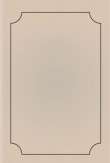You are here
قراءة كتاب The Starvation Treatment of Diabetes
تنويه: تعرض هنا نبذة من اول ١٠ صفحات فقط من الكتاب الالكتروني، لقراءة الكتاب كاملا اضغط على الزر “اشتر الآن"
class="i2">Carbohydrate, 20 grams.
Protein, 30 grams.
Fat, 150 grams—1500 calories. No glycosuria.
Carbohydrate, 30 grams.
Protein, 30 grams.
Fat, 200 grams—2000 calories. No glycosuria.
Carbohydrate, 30 grams.
Protein, 40 grams.
Fat, 180 grams—2000 calories. No glycosuria.
Carbohydrate, 40 grams.
Protein, 40 grams.
Fat, 180 grams—2000 calories. No glycosuria.
Carbohydrates, 50 grams.
Protein, 50 grams.
Fat, 180 grams—2000 calories. No glycosuria.
Weight at discharge, 116 pounds.
Case 2. A Jew of 49, at entrance had 175 grams of sugar (5.5%), acetone slight, diacetic acid absent. Treated for three weeks with the old method, he got down to a diet containing carbohydrate, 15 grams; protein, 50 grams,—but still put out from 3 to 8 grams of sugar a day. By the old method we could not do away with the last traces of sugar.
The Allen treatment was started with two starvation days. On the second he was sugar-free—but showed 2.6 grams of sugar the following day on 12 grams of carbohydrate and 40 grams of protein. (This was one of the earlier cases when the diet was raised too quickly after starvation.) After one more starvation day and two vegetable days he stayed sugar-free while the diet was raised slowly to 30 grams of carbohydrate and 45 grams of protein, calories about 2000. Discharged sugar-free on this diet.
Weight at discharge, 110 pounds.
Case 3. A man of 35, a severe diabetic, entered Dec. 28, 1914. He had been in the hospital the previous July for a month and could never be made sugar-free with the old method of treatment. At entrance he was putting out 2.5% of sugar (135 grams) per day with strongly positive acetone and diacetic acid tests. Two starvation days made him sugar-free, but we made the mistake of not using twice boiled vegetables for his vegetable day after starvation. So on this day he got about 30 grams of carbohydrates, and for a few days he showed from 0.2% to 1% of sugar. Another starvation day was given him and he became sugar-free. This time his vegetables were closely restricted and he was given only enough twice-boiled vegetables to provide about 15 grams of carbohydrates. After this the diet was raised very slowly. He remained sugar-free for three weeks and was discharged so on,
Protein, 40 grams.
Fat, 200 grams.
At no time did he receive more than 2200 calories.
Weight at discharge, 138 pounds.
These three cases were the first ones we tried, and in each one of them we made the mistake of raising the diet too quickly—either allowing too many vegetables on the vegetable day, or raising the protein too quickly afterwards. With the later cases, after we had more experience, there was no more trouble.
Case 4. A Greek (male) of 48, diabetic for two months, entered Jan. 14, 1915, with 3.8% (65 grams) of sugar and moderate acetone reaction. There was no diacetic reaction present at entrance. After one starvation day he became sugar-free, but was kept on starvation one day longer and then started on vegetables in the usual way. After the third day a moderate amount of diacetic acid appeared in the urine and continued. The ammonia rose from 0.7 grams per day to 2.6 grams per day, and then varied from 0.3 to 1.5 grams per day. No symptoms of acidosis.
Carbohydrate, 15 grams.
Protein, 25 grams.
Fat, 150 grams—1360 calories. No glycosuria.
Carbohydrate, 15 grams.
Protein, 25 grams.
Fat, 200 grams—1571 calories. No glycosuria.
Carbohydrate, 25 grams.
Protein, 35 grams.
Fat, 200 grams—1760 calories. No glycosuria.
Carbohydrate, 35 grams.
Protein, 40 grams.
Fat, 200 grams—1838 calories. No glycosuria.
Carbohydrate, 45 grams.
Protein, 50 grams.
Fat, 200 grams—2194 calories. No glycosuria.
Carbohydrate, 50 grams.
Protein, 60 grams.
Fat, 200 grams—2347 calories. No glycosuria.
Weight at entrance, 160 pounds.
Weight at discharge, 156 pounds.
This was not a severe case and responded very easily to treatment.
Case 5. A female of 59, a diabetic of two years' standing, excreted 2.6% of sugar on Jan. 16, 1915, with no acetone or diacetic acid reactions in the urine. Severe pruritus vulvae. Starved two days; sugar-free on the second starvation day, with disappearance of the pruritus.
Carbohydrate, 15 grams.
Protein, 25 grams.
Fat, 150 grams—1595 calories. No glycosuria.
Carbohydrate, 35 grams.
Protein, 45 grams.
Fat, 200 grams—2156 calories.
Weight at entrance, 135 pounds.
Weight at discharge, 133 pounds.
Case 6. A man of 52, entered Jan. 10, 1915, with 1% of sugar. He entered for arteriosclerosis and hypertension, and the sugar was found in the routine examination of the urine. He was kept on house diet for a few days and his sugar rose to 3.5%. No acetone or diacetic acid. After two days of starvation he became sugar-free and continued so as the diet was slowly raised. He was kept sugar-free in the ward eighteen days and was sugar-free on



